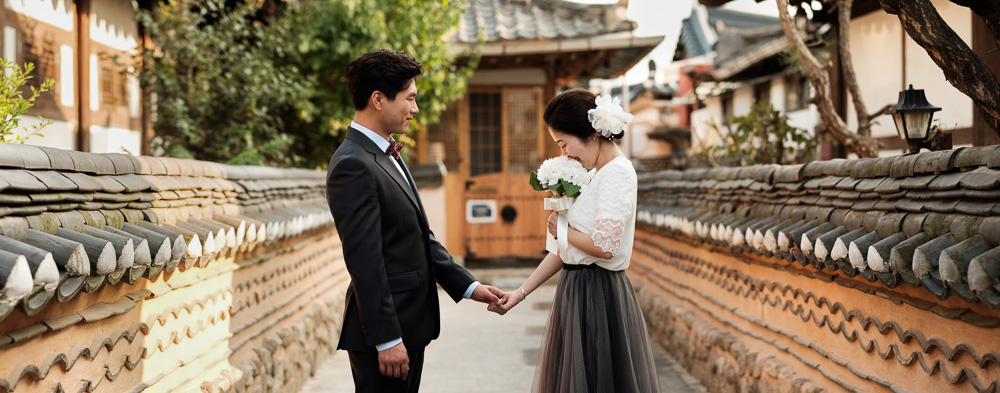The Fuji X system has become widely known for its high quality lens system. Amongst MILC systems, it has the widest variety of any system. This is quite amazing considering the system is also one of the youngest. Fuji have tapped into their years of knowledge in lens design to create some spectacular lenses at reasonable price points. There are so many wonderful lenses in the system, but these are my top five.
XF 16mm f/1.4 R WR
As a lover of wide angle lenses, the 24mm-equivalent XF 16mm f/1.4 is the perfect fast wide angle lens. The standard zooms on the system cover 16mm as well, as does the 10-24mm. However, this is the only wide aperture lens at this focal length. It is extremely sharp wide open and only gets better as it is stopped down. Its weather-resistant construction also makes it a favorite for travel. Although the construction of the Fuji X lenses is stellar, even on the cheaper lenses, the 16mm is one of the best-feeling lenses in the system. The aperture ring has a good level of click and the clutch-based manual focus selection makes it easy to switch between focus modes. Autofocus is quick, especially on the newer X-Trans III bodies. Possibly the only downside of this lens for me is that the filter ring is 67mm, whereas my other primes are all 52mm or 62mm.
My favorite use for this lens is environmental portraits. Its lack of distortion makes it the perfect lenses for keeping lines straight while still being able to exaggerate near-far perspectives.

XF 23mm f/1.4 R
This is the classic 35mm equivalent focal length for APS-C sensors, and it's yet another spectacular performer for the X system. Again, it is extremely good wide open; in fact, it seems to be the sharpest amongst the f/1.4 primes from my testing. It may not be as small as the new XF 23mm f/2, but the XF 23mm f/1.4 is still small enough to balance excellently on any of the X Series bodies.
This is my choice for when I'm trying to maintain a level of flattery as I get closer to my subjects. It's still great for environmental portraits, but subjects close to the lens do not become as large as when using the wider 16mm. I find myself using it quite frequently during engagement sessions.

XF 35mm f/1.4 R
As Zack Arias mentioned some time ago, this lens has magic inside. I haven't bought into the newer, smaller, weather-resistant 35mm f/2 because I love the way this lens renders. It may not be quite as sharp as the other primes listed here, but it has a look that the others can't reproduce. After f/2, it is as sharp as any of the other lenses in the system, so there're no worries there either. Not only that, it's tiny and light. I don't leave home without it, because I can simply slot it into my bag in any leftover space and not even notice the weight. It is also one of the most flare-prone lenses on the system, which is a plus for me, as I love flare. It is the slowest-focusing lens I've used on the X system as it hunts around a lot. However, this is vastly improved on the newer X-Pro 2 and X-T2.
This lens is a favorite for portraits and as a general walk-around lens. The focal length is versatile, and the images are beautiful. If I had to have just one lens on the system, this would be it. It can be used for everything from a head-and-shoulders portrait to a landscape panorama.

XF 56mm f/1.2 R
This is the classic portrait lens for the X system. Smaller and lighter than its DSLR brethren, the XF 56mm f/1.2 makes an excellent addition to any portrait shooter's bag. As you would expect from Fuji, it is sharper wide open than Canon's f/1.2 offering. When stopped down to f/1.4 or f/1.8, sharpness seems to be a little lacking when compared to the Canon and Nikon equivalents, but is still plenty good enough for most uses. By f/2, you can guarantee that any lack of image quality is user-error. This lens is just phenomenal. Its bokeh is a little sharper than the XF 90mm or Nikon's Cream Machine, but for all intents and purposes, it is a strong performer. When mounted on the newer X-Trans III bodies, it focuses much more quickly and no longer hunts for focus, even in low light.
My favorite use for this lens is the Brenizer Method. Its extremely shallow depth of field and beautiful focus falloff make it the perfect lens for these type of shots. Of course, it's a spectacular portrait lens all around as well.

XF 90mm f/2 R LM WR
For sheer image quality, this lens is simply incredible. It is sharp all the way through the aperture range and has beautifully soft out-of-focus areas. The inclusion of the Quad Linear Autofocus Motor means it's also one of the fastest focusing primes. Fuji kept their 62mm filter ring for this lens, which is great as all of your filters from the 23mm, 56mm, and others will fit without the need to carry step-up rings or different filter sizes. It's a little heavier than the other primes, but still nothing to complain about, and it balances well in the hand.
The XF 90mm f/2 is the ultimate Fujifilm prime for closeup portraits and separation via depth of field. Even a full body portrait can be cleanly separated from the background with this lens wide open. Although it's minimum focusing distance is already a short 60 cm, with the MCEX extension rings, it becomes an excellent lens for close-up photography as well.

In Conclusion
Being a prime shooter, my top lenses are all primes. This is not to say Fujifilm doesn't make some great zooms, but they're not for me. I got into the Fuji X system for its compact size and high quality primes. For me, the above five lenses represent the pinnacle of Fuji's X system lenses. This is my go-to bag for almost every job I do.







My 23mm is more or less glued to my X-T1, love that lens!
The 14mm f2.8 is a cracker too.
I really wished they made all their fast primes WR.
I just don't understand their line up. The 35 f2 is WR but not the 1.4, but in the wide end, the 18 f2 isn't but the 1.4 is WR...
I'd make more sense if all the 1.4 were WR and the f2s were the more "consumer" primes...
It's simple. Older lenses don't have WR. It does not have anything to do with consumer/pro.
16mm 1.4 is WR, 90mm is WR , 50-140 F2.8 is WR.... those are not consumer.
Tempted to switch to fuji but as a commercial photographer maybe not wise. I need capture one thethering and iso below 200.
The iso is measured using a different standard- it's not a case of Fuji @ 200 is the same as Canikon @200. I can't recall the names/ detail, but if you google it it should be easy to find.
Yes, C1's IQ with Fuji files is nice but their support of features like tethering is half-hearted at best. Last I read they still don't have support for X-Pro2 files fully implemented.
In hope the tethered options (wireless and wired) !improve soon. I've been doing professional work (museum documentation) with my XPro-2 and an iPad Pro. I've spoken with tech support at Fuji and Nissin, and they both claim to be working on something.
The 35/2 at f/2 is better than the 35/1.4 is at f/2. It is the one le s swap I would makeonthe list. The 35/1.4 is a bit clunky with the af, and has great center sharpness, but the corners don't really come around until f/4-5.6. The f/2 has a better af feel and is stellar out of the gate. The WR is just icing on the cake.
That being said, the 35mm focal length just isn't as useful to me anymore. The 23 and 56 combo is perfect for me. Now if they just made a 66/1.4.
Also, the 16-55/2.8, 50-140/2.8, and 100-400 are excellent. The 100-400 will be my next purchase with the 1.4x t/c.
Yup, 23mm + 56mm combo is perfect.
"Amongst MILC systems, it has the widest variety of any system."
There are far more native lenses for the Micro Four Thirds system.
B&H sells 77 lenses for X Mount, of which 32 are made by Fuji, versus 121 lenses for MFT, of which 64 are made by Panasonic and Olympus - double the number from Fuji. Fuji's lineup of fast primes is definitely attractive, but MFT has a far broader and deeper overall selection. This is one of the main reasons I selected MFT rather than Fuji to replace my Canon kit.
i think you stole my camera bag! I own all of them, and they are my favorites.